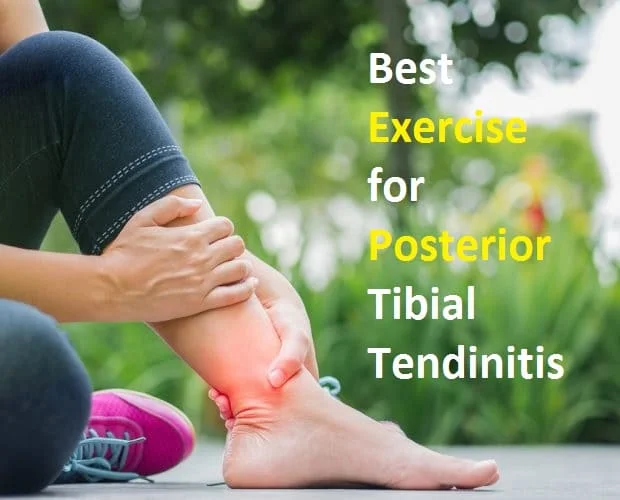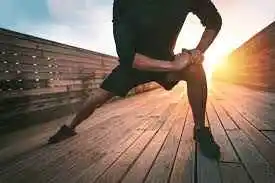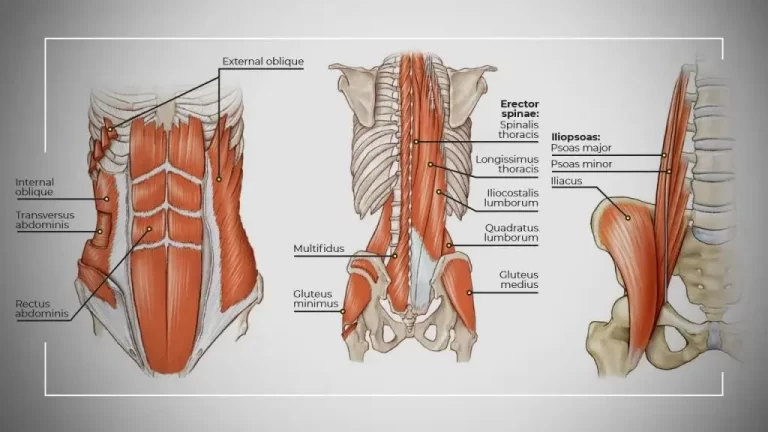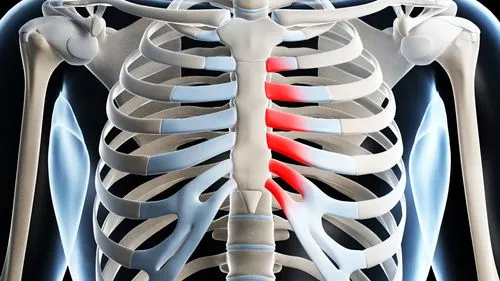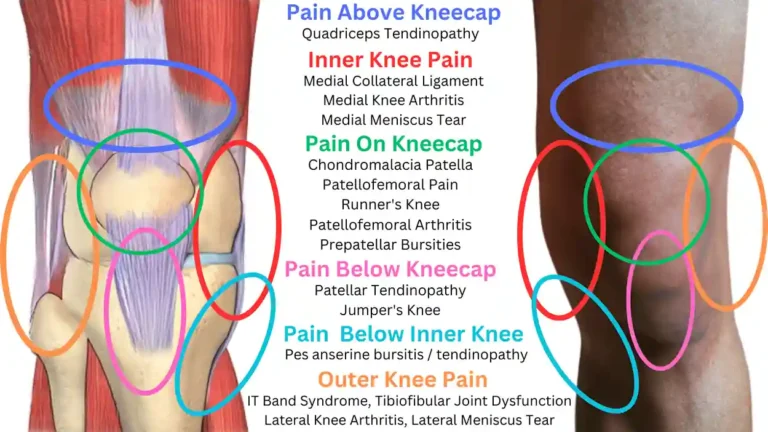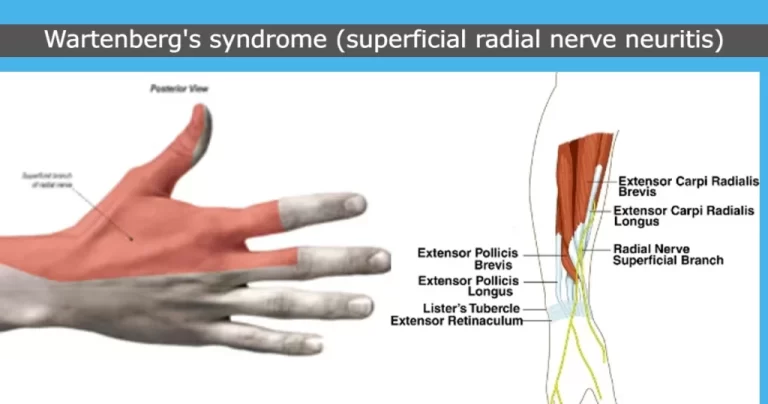13 Best Exercises for Posterior Tibial Tendinitis
Targeted Exercises for Posterior Tibial Tendinitis can help alleviate symptoms, strengthen the muscles and tendons surrounding the ankle, and improve overall foot function. These exercises aim to reduce pain, restore flexibility and strength, and promote proper alignment of the foot and ankle.
It is important to perform suitable workouts to manage and recover from posterior tibial tendinitis. A personalized exercise routine can help reduce pain, strengthen the tendons and muscles in the foot and ankle, and improve general stability.
To prevent aggravating the disease, it’s important to work together with your doctor, such as a physical therapist, to create a personalized fitness plan that meets your specific requirements and progresses gradually.
The posterior tibial tendon, which runs down the inside side of the ankle and foot, is at risk for inflammation and degeneration in Posterior Tibial Tendinitis, also known as Posterior Tibial Tendon Dysfunction (PTTD). This tendon is essential for maintaining the foot’s arch’s stability and supporting movement when walking and performing other weight-bearing exercises. This tendon can cause pain, swelling, and reduced foot function whenever it becomes hurt or irritated.
Introduction:
One common condition that happens when one of the tendons on the inside of the ankle is injured is posterior tibial tendonitis. This may lead to other problems, including pain in the ankles and feet. Depending on how severe the problem is, many forms of therapy may be used, such as immobilization, medication, surgery, and rest.
One of the most effective strategies for dealing with Posterior Tibial Tendinitis pain is to exercise. Depending on your situation, your physical therapist might give you advice or lead you through particular exercises for Posterior Tibial Tendinitis. One of the main goals of activities for posterior tibial tendinitis is to improve stability and mobility.
What are the different stages of posterior tibial tendon dysfunction?
There are four phases of dysfunction in the posterior tibial tendon;
- Stage I: The tendon is damaged but not completely broken.
- Step II: There is a ruptured or torn tendon, or it is not functioning properly. The foot has an abnormality.
- Stage III: There is a noticeable deformity in the foot. The connective tissue (cartilage) in the posterior part of the foot has degenerative alterations.
- Stage IV: The ankle joint is undergoing degenerative changes.
Causes:
- The most common cause of posterior tibial tendonitis is overuse of the tendon.
- Individuals who lead physically busy lifestyles, such as sports, dancers, and gymnasts, are more likely to develop posterior tibial tendinitis.
- Tight muscles in your ankles and feet can make your Tendons work longer hours and in uncomfortable postures, which can cause irritation or even a tendon tear.
- Weakening in the calf muscles. Your posterior tibial tendonitis may make up for supporting the function of your legs and feet if your calf muscles haven’t been strengthened.
- Arthritis of the joints. Your posterior tibial tendonitis may be under additional stress and gradually weaken if you have arthritis in your ankles or feet.
Signs and Symptoms:
The condition known as posterior tibial tendonitis usually affects one foot, though it can affect both.
Among the symptoms are;
- Pain in the inner arch, heel, or ankle
- Swelling
- The inward rolling of the ankle
- The redness
- The foot’s arch becomes flatter
- Having trouble walking or standing for a long period
- Pain that gets worse when you move.
Usually, symptoms follow physical activities like walking, jogging, or stair climbing. The location of your pain may shift as posterior tibial tendonitis progresses.
Due to posterior tibial tendonitis shifting of the heel bone, you may begin to feel pain on the outside of your foot and ankle and could get arthritis in the afflicted regions.
Exercise for Posterior tibial tendonitis:
Your doctor could recommend exercises to help with your recovery. Ask your physical therapist for advice on which exercises will benefit you the most and how to perform them safely and correctly. An over-the-counter orthotic for shoes could be helpful as well.
Side-lying leg lift
- On the ground or a mat, lie on your right side.
- Your body should be in a straight line with your legs outstretched and your feet placed on top of one another.
- You can either hold your head with your elbow bent or place your arm straight on the floor below it for support.
- Stretch your left hand out in front of you or allow it to rest on your hip or leg for extra support.
- As you exhale, raise your left leg off the bottom leg.
- Hold this position for a few seconds.
- As soon as you feel contracted, stop raising your leg.
- Take a breath, then lower the leg back down to touch the right leg.
- Then relax.
- Repeat this exercise five to ten times.
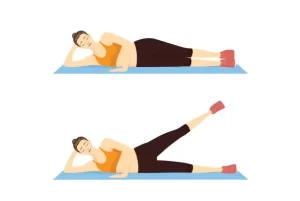
Prone leg raise
- On the ground, lie face down.
- Tighten your core muscles gently while keeping your abdominal muscles engaged.
- While performing this, your breathing ought to continue unrestricted.
- Gently raise one leg backward while maintaining your knees straight and your abs tight.
- As your leg rises off the ground, maintain a straight knee.
- After a few seconds of holding your leg straight up in the air, carefully go back to the ground.
- Then relax.
- When elevating your leg, take care not to rotate your pelvis or back.
- Repeat this exercise five to ten times.

Towel stretch
- Stretch your legs out in front of you while sitting on the floor or on your bed.
- Just below your toes, round out the center of your foot with the towel.
- Pull the towel gently, keeping your knee straight while you allow your foot to gradually bend up toward it.
- The back of your lower thigh should feel a little bit stretched.
- Depending on where the muscle or tendon is tight, you can feel the stretch below your knee or behind your heel.
- Hold this position for a few seconds.
- Then release the stretch gradually.
- Then return to your neutral position.
- Relax.
- Repeat this exercise five to ten times.
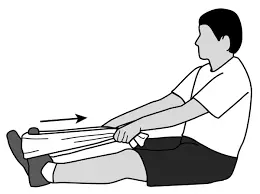
Standing calf stretch gastrocnemius muscle
- Step forward and take a position facing a wall or other strong object.
- Step forward with one foot while keeping both of your toes pointed straight ahead.
- For the stretch, place the leg behind you with the knee extended.
- Lean forward in the direction of the wall, holding your body with your arms while bending your front knee until you feel a slight stretch down the back of your leg.
- Move toward or away from the wall so that the back leg stretches.
- To further manage the stretch, you can also adjust how the front knee bends.
- Hold this position for a few seconds.
- Then return to your neutral position.
- Then relax.
- Repeat this exercise five to ten times.
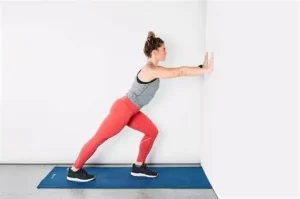
Standing calf stretch soleus muscle
- Place yourself in front of a wall or other strong object to start.
- Step forward with one foot while keeping the toes of both feet pointed directly forward.
- Stretch by putting the leg behind you with the knee bent.
- When you feel a slight stretch along the part of your leg that is most behind you, lean forward toward the wall and support yourself with your arms while allowing your anterior knee to bend.
- Move closer to the wall or farther away from it to maintain the posterior leg stretch.
- You can also control the stretch by varying the front knee’s flexion.
- Hold this position for a few seconds.
- Then return to your neutral position.
- Then relax.
- Repeat this exercise five to ten times.

Heel raise
- Begin in a comfortable standing position.
- Sit close to a wall or hold onto the back of a chair for support.
- To place yourself on the heels of your feet, lift both of your heels off the ground.
- Hold this posture for a short while.
- Lower your heels down to the beginning position.
- After that, relax.
- This exercise should be done five or 10 times.
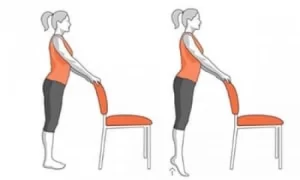
Step-up
- A step stool is required to begin this activity.
- Now, position your affected foot on a three- to five-inch (8- to 13-centimeter) high support, such as a tiny step or wooden block.
- Gently plant the normal foot on the ground.
- Put your weight on the leg that is injured and use the support.
- When the other leg lifts off the ground, extend the leg that is afflicted.
- Bend your afflicted leg and progressively go your normal leg back to the ground so it returns to the starting position.
- After that, relax.
- This exercise should be done five or 10 times.
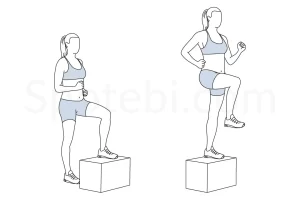
Soleus Raise with Weight
- Start with a relaxing seating position on the bench.
- Grasp a pair of dumbbells in the palms of your hands while seated at the end of the bench.
- Place your heel on the step or block’s edge and let the ends of the dumbbells rest against your thighs, near your knees.
- As much as possible, let your heels slide without touching the ground.
- Hold this position for a few seconds.
- Then return to your neutral position.
- Then relax.
- Repeat this exercise five to ten times.
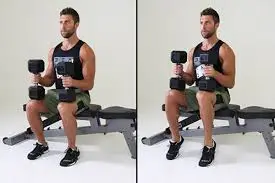
Wobble board
- To complete this activity, you must Place your feet shoulder-width apart while standing on a wobbling board.
- Rock the board a few times each way, then a few times from side to side.
- Should you need support, grab onto a chair or other object.
- Make sure the wobble board’s edge always makes touch with the base by rotating it around.
- Each time, starting in a clockwise direction and ending in an anticlockwise way.
- For as long as you can, keep your balance on the wobble board without letting your feet hit the edges.
- Try to stay off the ground for two or three minutes while doing this.
- Avoid letting the wobble board’s edge come into contact with the ground while you rotate it in both clockwise and counterclockwise directions.
- Once you have gotten the hang of the wobbling exercises while standing on both legs, try doing them again while standing on the injured leg alone.
- Try performing these exercises with your eyes closed once you can do them on one leg.
- Make sure you have support close by in case you become unstable.
- Then relax.
- Repeat this exercise five to ten times.
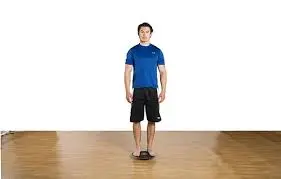
Forward Step Downs
- Use both feet on a step or box as a starting point.
- Move the unaffected leg slowly down and away from the step or box until it touches the floor lightly.
- Hold this position for a few seconds.
- Then, return to the starting position using both feet on the step or box.
- Then relax.
- Repeat this exercise five to ten times.
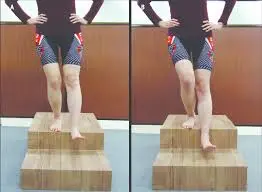
Ankle inversion
- A chair should allow your feet to rest on the ground.
- Place your injured foot over the other leg so that it rests on your thigh while your unaffected leg stays flat on the floor.
- Make a lengthy loop out of the band, tying one end around the inside of the afflicted foot and the other under the foot on the floor.
- Lift the foot that is afflicted inward and turn it against the band’s resistance.
- Hold this position for a few seconds.
- Then return to your neutral position.
- Then relax.
- Repeat this exercise five to ten times.
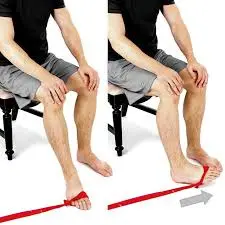
Ankle inversion with ball
- The ball is placed between two feet.
- Try to pull your feet closer together by gently pressing your toes onto the ball.
- For the number of times indicated, repeat.
- Repeat a few times and hold it for a few seconds each time.
- Then return to your neutral position.
- Then relax.
- Repeat this exercise five to ten times.
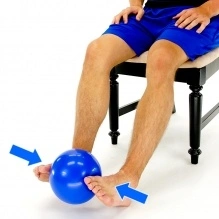
Ankle toe movement
- Begin in a comfortable supine position on the bed.
- Then, bend your toes as close to your body as you can.
- Hold this position for a few seconds.
- Then point them away.
- Then relax.
- Repeat five to ten times.
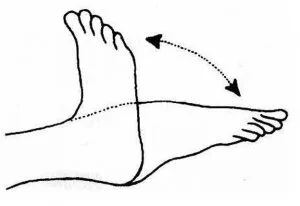
Risk Factors:
Posterior tibial tendonitis is more likely to impact individuals who;
- Women
- People who are older than 40
- Diabetes sufferers
- Young athletes
- A person suffering from hypertension
- Rheumatoid Arthritis
- Overweight
- Past injuries (certain kinds of ankle fractures)
- Overuse
Prevention:
- Putting on supportive shoes. It is suggested that you select a shoe with more arch support. Stay away from shoes that put you at higher risk of harm, such as flip-flops, platform shoes, and high heels.
- Stretching the lower foot. Stretching the tendon and surrounding muscles while standing is an excellent way to improve flexibility in the calf. Another tool for relaxing calf muscles is a foam roller.
- Engaging in strengthening exercises. Exercises that strengthen your foot and ankle and lower your risk of injury include resistance band exercises, single-limb heel lifts, and short toe walks.
- Not enduring pain. As soon as you feel any kind of pain, stop what you’re doing.
Prognosis:
- In lack of treatment, posterior tibial tendon dysfunction is a degenerative condition that will only worsen.
- Progression might be slowed down with early identification and treatment.
- Individuals who receive customized orthotics along with rehabilitation are showing significant improvements.
- It is incorrect to guarantee a return to the pre-disease state after surgery because the outcomes are not as reliable.
- Following reconstructive surgery, patients may have various effects.
Summary:
Another name for posterior tibial tendinitis is dysfunction. Physical treatment could be beneficial if you have the problem. Your ankle’s range of motion can be improved with physical therapy exercises. Additionally, they support balance, strength, and flexibility.
The main focus of your physical rehabilitation program should be exercised. Certain exercises effectively treat posterior tibial tendinitis. The ideal workout regimen for your condition will be determined in consultation with your physical therapist.
Stretching and range-of-motion exercises maintain the strength of the muscles in your ankles and feet. The other muscle groups that keep the proper posture of your lower body are supported by these activities. It’s also important to strengthen your sense of balance.
Talk to a doctor before beginning any workout program for posterior tibial tendinitis They can confirm that you can start doing them safely.
FAQs
Is posterior tibial tendinitis helped by walking?
Cycling is a fantastic alternative for cardiovascular exercise because Posterior Tibial Tendonitis is usually made worse by impact activities like walking or jogging.
Does physiotherapy help with tendinitis?
It is advised that you get testing and diagnosis from a physician or physiotherapist if you believe you may have tendonitis. It is beneficial for you to see a physiotherapist since they may help treat your pain using modalities and exercises.
Which three tendinitis symptoms are common?
When you move, tendon pain worsens the damage. having trouble moving the joint. Contracting the tendon will cause an irritating or crackling sensation. swell, sometimes marked by redness or heat.
Can tendinitis ever fully recover?
Eventually, tendinitis may go gone. If it doesn’t go away, the doctor will recommend ways to keep you active while reducing inflammation and pain. A rheumatologist, orthopedic surgeon, or physical therapist may be required for specialized treatment in cases of severe symptoms.
How much time does tibial tendonitis recovery take?
It usually takes 6 to 8 weeks to improve posterior tibial tendon dysfunction and to take early action on a tendon that is mending.
When I have posterior tibial tendinitis, can I still work?
The posterior tibial tendon is slowly healing if you were trying to exercise with this trauma. This is likely because there is not enough blood flow to the tendon’s part that runs along the medial malleolus.
How can posterior tibial tendinitis be healed the quickest?
Reducing the number of sports and other activities that put a strain on the ankle or foot.
Cooling the foot with ice.
To lessen swelling, elevate the foot.
Taking nonprescription medications like ibuprofen.
Strengthening the posterior tendon with physical therapy.
How may physical therapy be used to treat posterior tibial tendonitis?
A posterior tibial tendonitis physical therapy program focuses on the ankles and feet. Stretching and range-of-motion exercises maintain the strength of the muscles in your ankles and feet. The other muscle groups that maintain the proper posture of your lower body are supported by these activities. It’s also important to strengthen the balance in your life.
What happens if the tendonitis in the posterior tibia is not treated?
The most typical cause of adult-developed flatfoot is an issue of the posterior tibial tendon. If the degenerative changes in this tendon are not recognized and solved, they will cause pain and weakness, eventually resulting in foot deformity and degenerative changes in the surrounding joints.
Which is recommended for posterior tibial tendonitis: heat or ice?
In the event of unexpected tendon damage, ice may help reduce pain and swelling. Ice the affected area for fifteen to twenty minutes every four to six hours. Position a cloth or towel between your skin and the ice pack.
What is a home remedy for posterior tibial tendonitis?
Another time, the wounded tendon usually gets worse when it is compressed. Instead, use a massage ball or foam roller to work on the muscles in your calf, avoiding the painful spots.
On the posterior tibialis, which muscle is it?
The posterior compartment of the lower leg contains the tibialis posterior. Seven muscles make up the posterior compartment: the tibialis posterior, flexor digitorum longus, plantaris, popliteus, gastrocnemius, and soleus.
References:
- On June 12, 2022, Pt., B. S. Exercises for Posterior Tibial Tendonitis in Physical Therapy. Verywell Medical. Physical therapy exercises for Parkinson’s disease (PTT): https://www.verywellhealth.com/
- Pietro Tirgar (2023, December 13). The Top 14 Exercises for Posterior Tibial Tendinitis – Mobile Physiotherapy Clinic. 14 of the best exercises for posterior tibial tendinitis can be found at https://mobilephysiotherapyclinic.in.
- The signs, symptoms, and exercises of posterior tibial tendinitis. (As of now). Posterior tibial tendinitis information from Hingehealth. https://www.hingehealth.com/resources/articles/
- C. C. M., Professional (n.d.). Dysfunction of the Posterior Tibial Tendon (PTTD). [My.clevelandclinic.org/health/diseases/22057-posterior-tibial-tendon-dysfunction] Cleveland Clinic
- PhysioAdvisor – Posterior Tibial Tendonitis – Tibialis Posterior Tendonitis (2022, March 2). Tibial Posterior Tendonitis PhysioAdvisor. https://physioadvisor.com.au/injuries/ankle
- Dysfunction of the Posterior Tibial Tendon. (n.d.). The website Physiopedia provides information about posterior tibial tendon dysfunction.
- Image 3, Jan. 2010; G. Iribe and K. Naruse. Stretch-Sensitivity of Stretch-Activated BKCa Channels in Post-Hatch Chick Ventricular The Myocytes. Biophysics Journal, 98(3), 336a. The DOI for this publication is 10.1016/j.bpj.2009.12.1824.
- Image 5, Stretching the soleus (flexibility). (No date). The Health System of Saint Luke. Soleus Stretch Flexibility: https://www.saintlukeskc.org/health-library
- Image 6, 2020 January 17 T. The Top Exercises To Prevent Falls (With Pictures). Go to SeniorSafetyReviews.com. Here are the top fall prevention exercises that include pictures: https://www.seniorsafetyreviews.com/
- Image 8, P. Smith (2024) March 21. Unless your legs are chicken, try these 8 calf exercises. BODY. Calves Workout Exercises: https://www.beachbodyondemand.com/blog
- Image 9, J. Veling (2015) 9 November. The Top Board Balance Exercises for Runners. Active.com. The best balance board exercises for runners are available at https://www.active.com/running/articles
- Image 10, (2020, February 21) Alici, G. moving forward by stepping down. https://doi.org/10.1126/science.367.6480.950 Science, 367(6480), 950–950.
- Image 11, S. Bhatia, Dr. (1953). 12362_pdf.pdf can be found at https://www.tnaijournal-nji.com/admin/assets/article/pdf. Indian Nursing Journal, XLIV(07), 173–175. The doi: 10.48029/nji.1953.xliv702
- Image 12, N. Teeter (2014) May 27. To view Pinterest, log in or sign up. Pinterest: https://www.pinterest.ca/pin/21673641931609779

